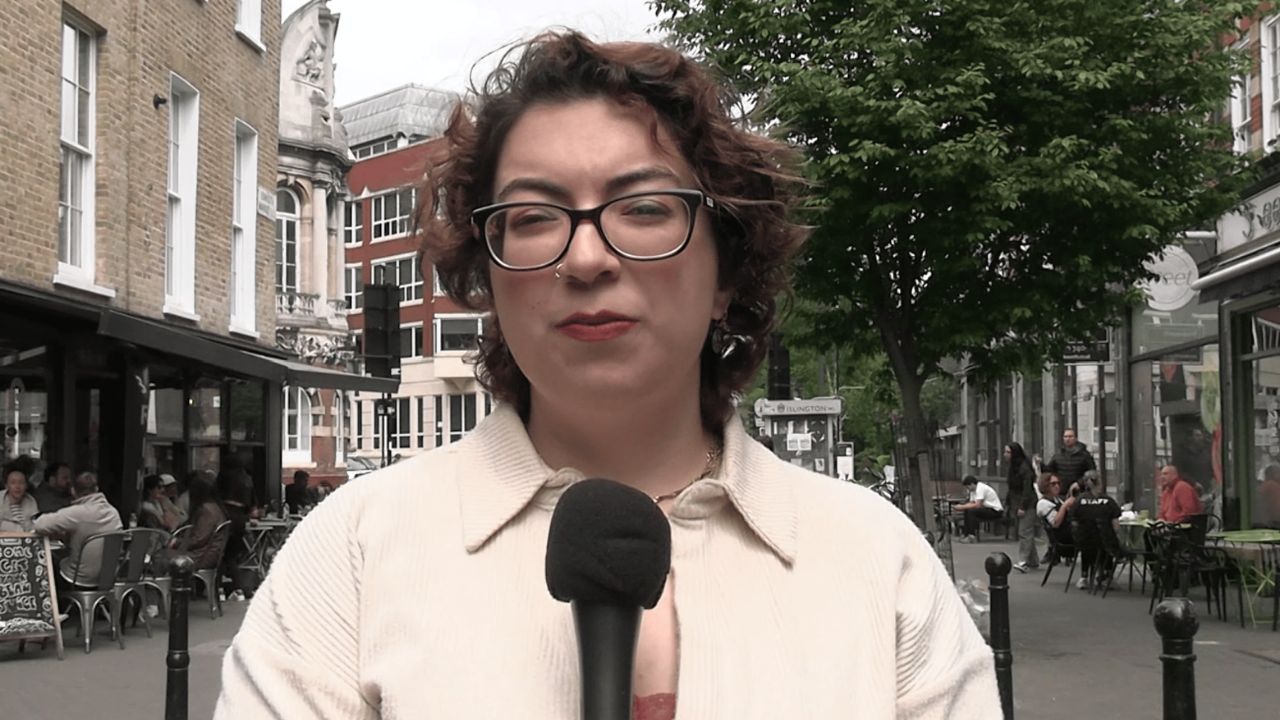
How AI is changing the business of journalism
by Aysun Bora
An Italian paper did the unthinkable and published the world’s first newspaper, that has been fully written by AI The initiative by Il Foglio, a conservative liberal daily newspaper, is part of a month-long journalistic experiment aimed at showing the impact AI technology has on newsrooms across around the world.
The newspaper’s editor Claudio Cerasa said in a public interview that AI technology was even used to add irony into the writing. The journalists working on the project merely prompted the AI tools and read over the answers.
This comes as Business Insider announced in an internal memo to lay off 21% of its staff, due to shrinking news traffic amid the spread of AI tools, just at the end of May.
Regarding journalism, AI is not coming into fashion, it is already the norm. The media industry is one of the sectors most affected by it, with 90 per cent of newsrooms using AI for news production, shows data collected by the London School of Economics in 2024.
How the industry will look over the next couple of years, is something publications and experts are still fighting over. While publications like Newsquest employed 36 “AI-assisted” journalists, other publications like the Financial Times or Press Association don’t use AI writing for anything outward facing.
AI is not only impacting the way journalists work but also the way viewers consume journalism. In a recent survey, 71 per cent have said that they use AI as a search engine. This disrupts the way journalists access audiences and prevents income from clicks and advertisement.
The business of media is big and expensive. In the UK, the top 50 media companies turned over £1.1bn more collectively in their most recent accounts than they had the prior year, representing a 3.3% increase, according to the Press Gazette.
As media business models continue to evolve, the ripple effects on employment are substantial. In 2023 alone, the ONS reported around 83,500 journalists working in the UK – underscoring the vast number of individuals whose livelihoods are at stake.
So, how is AI impacting journalism and the news business as a whole?

The good – What if AI is useful?
That is what former editor in chief of Tatler, Vanity Fair and The New Yorker Tina Brown thinks. In a sit-down interview, she says that AI could be a great tool to speed up and help journalistic processes. “If you can go through 50 pages of documents about… Donald Trump's taxes and have AI find 50 per cent of the keywords, that's going to speed up your investigation enormously.”
One way of doing that might be the intentional use of AI and data journalism to dig out local stories like RADAR does. With the Reporters And Data And Robots (RADAR) project a team of five data reporters and two editors produced an average of about 8,000 local stories per month across the UK. Its stories are run by various local media outlets that subscribe to the wire service it provides.
Lesley-Anne Kelly is the editor of RADAR. She explains how her team uses natural language generation and classic data journalism tools to scrap information from big data sets. Then they decide what is editorially worth pursuing. “RADAR is an absolutely required unit in the UK data journalism. I mean local journalism in general, is struggling.”
Only in May, Independent local newspaper the South London Press announced it would close after 160 years. Press Gazette's latest research suggests at least 293 local newspapers have closed since 2005.
Ms Kelly goes onto say that RADAR “fills the gaps” regarding local data journalism since data journalism is “too expensive and resourceful” and many newsrooms can’t invest in that. “Looking at data sets takes time and sometimes there is no story. Data journalism often takes more time than your average live news or breaking news reporting.”
She emphasized the importance of data journalism and highlighted how language models, when used effectively, can significantly support it. “I'm just not sure that those local stories would ever be told without data journalists really having those skills. She says “democratising” that data and “telling those stories” is crucial.
The news publication conglomerate Newsquest also takes the bull by the horns. In a conversation with a person from leadership, they agreed on speaking on condition of anonymity. Throughout this article, he will be called “Mr Smith”.
Newsquest uses AI daily, especially in their internal platform, and employ AI-assisted journalists. “Generative AI certainly demonstrates easy reward for small effort,” Mr Smith says.
To come back to journalism, Newsquest’s “Mr Smith” explains how their regional journalists use GenAI for different tasks with an internationally trained model. It helps with writing up press releases, SEO optimisation, Freedom of Information Act requests. “It helps us understand what our readership wants,” he says. “40% of the page views that we generate is consumed by only 4% of the users. So AI helps us develop more content for those 4% to keep them on the site for longer.”
As someone that has researched media AI use in depth over his career, assistant professor at the University of Amsterdam Hannes Cools also calls for a more conscious way of using AI. Over a video call, he said: “I think a lot of newsrooms use AI without asking ‘What kind of problem do we want to solve if we use AI?’ I think that's also a question that it's often not being asked because it's just there and people use it without thinking thoroughly about it.”
Rajvinder Jagdev is a computer scientist and partner at specialist IP litigation firm Powell Gilbert LLP. He thinks using AI for journalism should be a conscious and intentional choice. “It is like using a calculator. The fact that I don’t do maths on a sheet of paper like my parents or grandparents, doesn’t mean I can’t do maths.” He thinks AI should be “embraced” in journalism since newsrooms might risk falling behind otherwise. But, moderation is important, he stresses.
“Publications can suffer from a degradation of the quality of the outputs driven by a commercial need to put so much more out there and update it so frequently.”
Ms Meyer stresses how GenAI tools are most useful as a research assistant and right hand. She adds: “AI could never be an alternative to journalism in my opinion. What we do is special. We dig out the truth and connect to people.” She thinks seeing some news publications making journalists redundant such as Business Insider or purely AI produced like Il Foglio has been “scary” and “concerning”.
Teaching journalists how to use AI in newsrooms consciously is something Harriet Meyer has made her mission. She has been a financial journalist for two decades and now also coaches journalists on AI. “It is not a question of if but how we are using AI in journalism because it is everywhere already and it is journalists duty to go with the times and stay up to date.”

The bad – Audiences are losing trust
A study by the BBC showed severe inaccuracies in new articles written by AI. More than half of the AI-generated answers provided by ChatGPT, Copilot, Gemini and Perplexity were judged to have “significant issues”, according to the study by the BBC.
The errors included stating that Rishi Sunak was still the prime minister and that Nicola Sturgeon was still Scotland’s first minister; misrepresenting NHS advice about vaping; and mistaking opinions and archive material for up-to-date facts.
With only a third of UK respondents trusting newspapers or magazines, according to an Ipsos study from 2025, trust in media might decline further with unregulated use of AI technology in writing and research. In the Ipsos Trust Index from 2024, journalists were among the five least trusted professions with 27 per cent.
While trust in news is already fractured, the untransparent use of AI is hurting the audience-publication relationship even more, assistant professor at the University of Amsterdam Hannes Cools thinks. In his study News Automation and Algorithmic Transparency in the Newsroom: The Case of the Washington Post he finds how important not only external but also internal transparency is in newsrooms while working with AI. The inherent importance of accuracy and transparency in journalism must be maintained throughout the workflow, he says.
“I think journalism hasn't really been good with transparency. When you read an article, you see which kind of sources the journalist has spoken to. But when it comes to technology, they haven't really been transparent whatsoever.” He goes onto explain that this decreased trust in journalism could result in lower readership and moving to alternative information sources.

The Ugly – Is it all about profit in the end?
Georgetown University suspects that newsroom jobs will decline by roughly 3 per cent from 2022 to 2031 in the United States, adding to the long-term decline in journalism jobs. By 2031, the number of journalism jobs will have fallen by nearly 35 per cent since 2002, a total loss of more than 20,000 jobs.
In the UK, 45 per cent of journalists were working in the newspaper and magazine sectors in 2012 but by 2023, this had declined to 27 per cent. Journalists are increasingly working across other sectors of the economy, particularly in self-employed roles, according to the NCTJ’s Journalists at Work report.
Hannes Cools fears that further AI use just for the benefit of profit might hurt entry-level journalists and freelancers in the long run. Mr Cools says: “Freelancers who might not be familiar with the new tech, might be left behind… for people entering the industry its tougher due to the lack of these kind of smaller tasks that you need to do before maybe writing more lengthy articles.”
Journalists already struggle with pay. The average journalism salary is £27,500, according to the NUJ’s 2024 Journalists at Work. Meanwhile the average salary in the UK is £34,963 a year, according to data from the Office for National Statistics (ONS).
Mr Cools warns that “irresponsible use of AI” just for “efficiency gains” could “backfire” and hurt journalism in the long run. He calls for reasonable use of AI in the newsroom to “enhance” journalism.
He is not the only one – the National Union of Journalists (NUJ) leads an AI campaign calling for urgent regulatory oversight promoting ethical approaches that centres the work of journalists.
The campaign warns from AI “directly threatening journalism” and says it “risks the reputation of every journalist abiding by ethical standards to ensure accuracy and honesty through their work.”
In an interview NUJ general secretary Laura Davison said: “Whilst the emergence of AI brings opportunities, there are also risks posed to the livelihoods of journalists if copyright law is not enforced. Our campaign calls for action by governments to ensure journalists including freelances and photographers, have their rights protected as big tech seeks access to material.”
“We know public trust and confidence in journalism is essential, yet we have witnessed the use of AI technologies cause harm through the spread of misinformation and disinformation - it is time for regulation that calls for content generated in this manner to be labelled as such.”
The FT’s Abbie Scott also thinks the government plays a big role in protecting journalists. “Everyone needs journalism and needs news. How newsrooms will look like is another discussion. I do think eventually there possibly is a role to play at a government level to make sure that the rights and the protections for... journalists are in place.”

What comes next? –
How can journalism survive with changing search and audience needs?
Journalism business models have been in constant change. Since information has been freely accessible on the internet, the business model has had to adapt. From shifting to a subscription model for a niche audience, to profiting through advertisements or offering additional services, news organisations have evolved.
Especially with search engine strategies not working anymore, the business of journalism has to tackle a “disruption”, Hannes Cools says. “Search is changing. With ChatGPT or Google search, you have now these summaries.” Since most people don’t click on the links, “most news organizations have been rushing to strike deals with the Googles and the open AI's of this world to at least be part of the game still.”
The Financial Times’ Abbie Scott Director of Operations thinks the main conundrum comes from how people access information. “Will news websites exist in the future? Will people just be going straight to their whatever their choice of AI to find information in the format that they want it? And what does that format look like? I don't think anyone has the answers yet, so I think that's one for the future.”
Former editor in chief of Tatler and the New Yorker Tine Brown agrees. “There are going to be trade offs… We don't yet know the trade offs yet, but unfortunately, we have to embrace it, because we're not going to stop it.”





